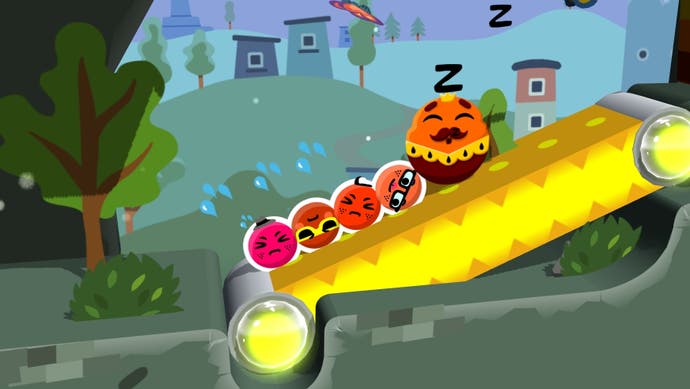iOS classic Rolando is back!
Let the good times roll.
The crucial difference between Rolando, which has just been re-released on the App Store, and LocoRoco, a game that Rolando is frequently confused with, is one of texture. LocoRoco is about squishy things. The Rolandos, meanwhile, are rigid. I imagine them as little balls of tough rubber, rolling around the game's jaunty marble mazes with a bit of weight to them as well as a bit of bounce.
It is lovely to play Rolando again. Lovely in part because it has a madeleine-like quality in 2019. While I play Supercell games constantly on my iPhone, I do not think back to the glorious wild west days of the App Store half as much as I should. With Rolando: Royal Edition comes memories of funny words I haven't thought of in what feels like an age. Was there something called NGMoco? Was there something called Trism?
It's not just that the App Store model has changed so much over the years. It's that lots of the early classics have disappeared. Rolando, I gather, has not been available for quite a while. It has disappeared in a way that is unique to mobile gaming. You can't hunt for it in the second-hand racks. You can't stumble across it on eBay. The market has buried it in concrete, and it's only now that HandCircus, the original developer has brought it back.

If you were of a conservative nature, Rolando was a bit of relief back in the early days of the iPhone. It looked recognisably like a video game. It looked like LocoRoco! It was only when you played it that you realised how different it was and how different iPhone gaming would be if people really thought about the device. These are games about rolling your Rolandos to the exit of each maze, sure, but you had to drag a box to select them, and then you had to tilt the device to move them around. Certain parts of the screen could be moved by prodding them with a finger, and you could page around the bigger levels with two fingers. Zut alors.
The new Rolando does not look the same as the old Rolando, but you would have to hunt down images of the old Rolando to discover that, because it feels very harmonious. A third dimension has been added to the art. The sound has been tidied up I think. There are probably dozens of little changes that are so carefully done that they have evaded my detection.
None of this matters. What matters is that Rolando is back and you can play it and get that wonderful nostalgia - nostalgia for something you might not even have realised was lost.

